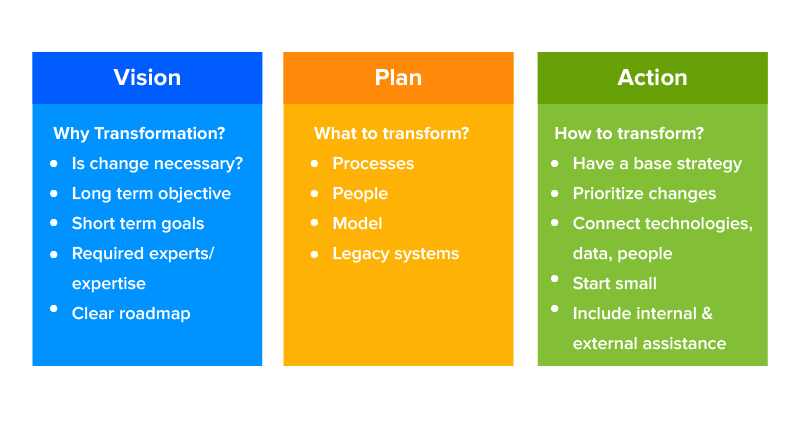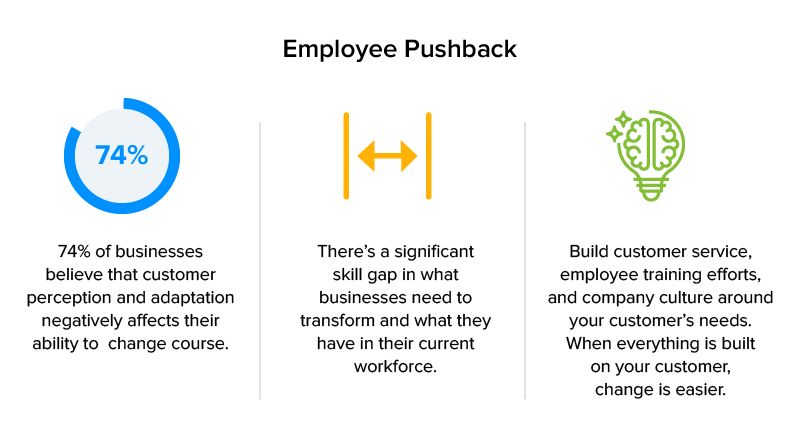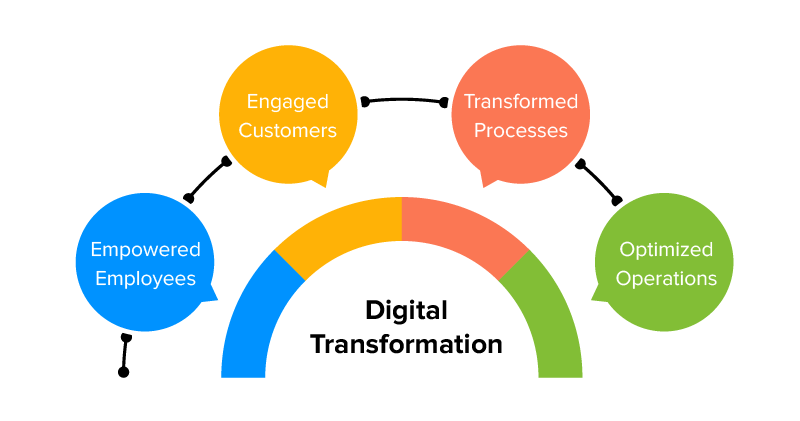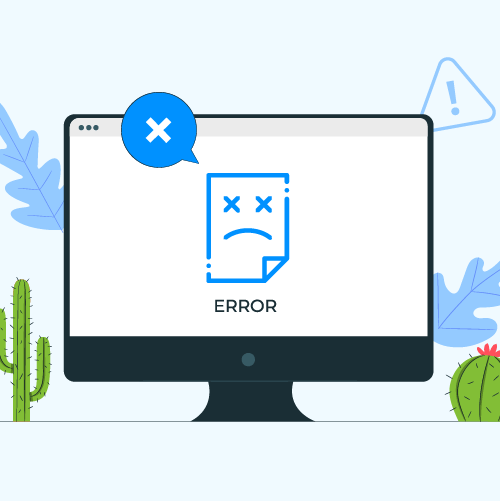Five Ways To Tackle Digital Transformation Without Downtime
Advanced technologies are significantly impacting and transforming the way people communicate and collaborate. How are businesses tackling this evolving corporate landscape?
From an option to a necessity – the trek of the digital transformation journey has always been full of obstacles and problems. When advanced technologies started having a significant impact and transforming the way people communicate, interact, and collaborate with a business, the majority of CEOs realized that it’s a matter of survival in the ever-evolving corporate landscape.
A survey conducted by Tech Pro Research Center in 2018 revealed several interesting facts. Out of all the respondents, 70% admitted that their business heads are either working on a digital transformation or already have one in place. Moreover, the survey also revealed that the budgets for IT transformation have been increased in the past couple of years by senior-level executives.
With the acceptance of C-LEVEL executives, every businessman knows that digital solutions are crucial for the success of an enterprise. However, the percentage of businesses that invested in a digital transformation strategy is surprisingly less. What’s the major contribution to such a low adoption rate? What’s hindering you from adopting digital transformation solutions?
The last ten years of information technology have been about changing the way people work. The next ten years will be about transforming your business!
A lot of CEOs are afraid that they’ll have to stop their business process while they undergo digital transformation. However, with proper planning and monitoring, you can easily conduct digital transformation in your company while keeping your business running.
Here’s a list of stats that’ll help you decide by yourself:
- A report by Adobe & E-consultancy stated that companies with a digital-first approach are 64% more likely to achieve their business goals than their competitors.
- According to a case study conducted by Deloitte, 45% of companies tell people that digital transformation has a positive impact on their business and reported higher net revenue growth.
- A published article by PwC stated that 52% of the companies plan to cut their defer investment amid the rise of COVID-19, while only 9% are likely to do the same with digital transformation’s budget.
As the statistics suggest, businesses that have adopted digital transformation strategy not only have an edge over their competitors but also allow them to get a higher revenue growth. In this article, you’ll know about five assured ways to tackle digital transformation without downtime. However, before we start, let’s get back to the basics and understand the correct meaning of digital transformation.
The Main Issues of Downtime
For most digital transformation services company owners, downtime is the single biggest reason behind the loss of production time. According to research by Vanson Bourne Research Study, 82% of companies have experienced unplanned downtime at least once over the past three years. Aberdeen’s Research further includes the cost of a company that can go as much as $250,000 an hour. Not just the production, but companies are also facing issues related to productivity, IT, and customer service due to the downtime.
The study by Vanson Bourne also revealed high levels of asset estate ignorance across organizations, wherein 70% of companies lack full awareness due to equipment maintenance, upgradation, or replacement.
The same study also reveals another issue that occurs due to unplanned downtime is that the unplanned downtime results in loss of customer trust and productivity. This loss resulted in a 37% loss in production time and 29% inability to support equipment for production.
When unplanned downtime occurs, no value is generated but the cost of digital transformation grows constantly specifically around overhead operations , which in parallel impacts a company’s bottom line.
The unplanned downtime is the real issue that is pervasive and finding a solution for this downtime gap is a primary step in an organization’s digital maturity and an essential role for a transformative journey.
Road Towards Zero Downtime
As organizations create and invest in their digital transformation business strategy, we are soon entering a time where zero tolerance and zero unplanned downtime will turn into a norm. The key to this is an understanding of and interest in field service management and asset performance management.
As indicated by Vanson Bourne, eight out of ten organizations have effectively perceived that digital tools can improve the visibility of assets and eliminate unplanned downtime. Around half of the organizations confirmed their intent to invest in field service and asset management in the following three years, while 72% claim that zero unplanned downtime is presently the focus of priority.
One of the significant barriers to digital modernization is the challenge to replace systems while maintaining business continuity. To build a strong customer base, and empower employees with modern technical skills, there is a strong need to increase the uptime and follow digital transformation maintenance to bring digital and IT transformation strategy in the business. Let’s look at the ways businesses are overcoming digital transformation challenges and adopting digital business transformation strategy.

5 Ways To Conduct Digital Transformation Without Missing Business
Digital transformation is a sure-shot way for large and successful organizations to stay ahead of their digital-only competitors. That’s why these projects are usually large in ambition and scope, but there are always some chances of risk. With that said, let us take a look at some of the handiest tips that allow you to undergo digital transformation without any downtime
1. Phase-wise Approach
Instead of following the traditional “rip and replace” methodology, you need to approach transformation in a more efficient way to prevent the risk of downtimes. Consider taking a phased approach to reduce the risk in your transformation. You can release a minimum viable product (MVP) into production early to get realistic structural and operational criticism. This phased approach lets you focus on each stage to make changes and develop a customer centric product.
To tackle the digital downtime, the first phase should always be to create and deploy a front-end proxy. The proxy will provide the data. Only after getting the data, you should move to now comes the time for the second phase which includes the replacement of the old stack.
2. Identify Problems Earlier
As downtime can be caused by a native problem, for example, a software glitch in a workstation, remote server, a major event, or any other reason. Thus, for a major transformation phase, you need to build an early warning system to validate and test things in each phase, so that not much time is wasted in detecting the issue and then resolving it.
Identifying problems earlier also helps in having a solution right there, so when the problem occurs then it is easier to correct it without affecting any productivity. With a little bit of testing, iterating, and assessing, you can easily manage traffic to the new system and identify any potential problems earlier.
3. Plan For Accuracy and Reliability
While undergoing a digital transformation, you must visualize, collect, and alert on in-depth operational metrics. It’s better to have a dynamic plan to ensure functional accuracy and operational reliability to minimize the chances of errors and move towards the next step. The plan can involve the right management. Then comes the skill development to streamline standard operations, decrease downtime, allow quick decision-making, enable employees to attain the skill effectively, and improve brand reliability.
The accuracy provides a convenient digital strategy framework to identify important components within the system and reliability helps in decision-making which is meant to upgrade the system availability or reduce the mean duration of system downtime.

4. Establish A Multi-Layered Fallback Mechanism
Multi-Layered Fallback Mechanism helps to reduce the use of the old system while decreasing the impact and elegantly degrading in case of problems. The mechanism helps in a way that the issues arising in one service do not harm overall operations.
During the transformation, you need to make sure that your team gets familiar with the use of new systems to prevent the product or service quality from degrading. That’s why it’s always a good idea to plan for multiple layers of fallback to keep your back covered.
5. Keep Everyone Involved in the Plan
One of the major issues is the skill gap in what needs to be transformed and what is there in the workforce. Thus, to make everyone in your organization understand the process, recognize the process, and agree that it will be worth the efforts, it is important to involve everyone in the plan. Involving the team in a plan helps to track the progress that is being made towards the goal. It helps build trust within the team and provide employees a chance to come up with approaches that they think will work in a way. Also this helps in getting out-of-box ideas from different members, preparing business transformation strategies, and there are chances of not wasting much time in finding a solution or explanation.
The After-Transformation Effect
Although DT is filled with numerous revolutionary technologies, the top ones are the internet of things, cloud computing, artificial intelligence, and big data. However, it’s more than just the use of technology – transforming corporate culture and business processes are also an integral part of the digital transformation process.
While it’s easier to manage the disruption created by technology to your business, you also need to make sure that your people can cope up with the changes – and it’s more than just technical skills. It’s more about embracing the change and being resilient and resourceful enough to make decisions faster and better.
If you have any business transformation challenges in your organization, you can partner with a digital transformation agency like Appinventiv to take care of the migration and adoption needs. We are a well known brand that builds digital products and processes to help teams get acquainted with changes through the shortest learnability curve. We have served digital transformation companies across the globe including digital transformation companies in USA and parts of the globe.


strategies your digital product..



